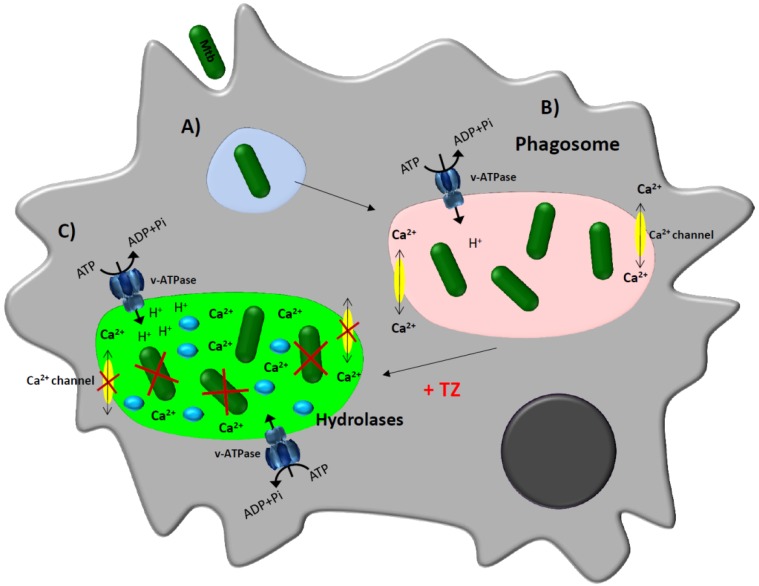Figure 3.
Schematic model proposed for the enhancement of the macrophage killing activity by thioridazine [26,50,62,69,71]. Infected macrophage. (A) The bacterium is recognized by receptors present on the plasma membrane of the macrophage and is internalized by invagination of the plasma membrane into a phagosome; (B) Once the phagosome is formed, the bacteria will manipulate the immune response, leading to the reduction of the availability of calcium within the phagosome, preventing the process of acidification needed for the activation of the hydrolases and the bacteria are thus not killed; (C) Treatment of infected-macrophages with Ca2+/ion channel blockers such as thioridazine (TZ) will increase the concentration of calcium into the cytoplasm and the transcription and activity of vacuolar proton (H+)-ATPases. This rise of protons causes the decrease of the pH in the phagolysosome, activating hydrolases that consequently kill the mycobacteria.

